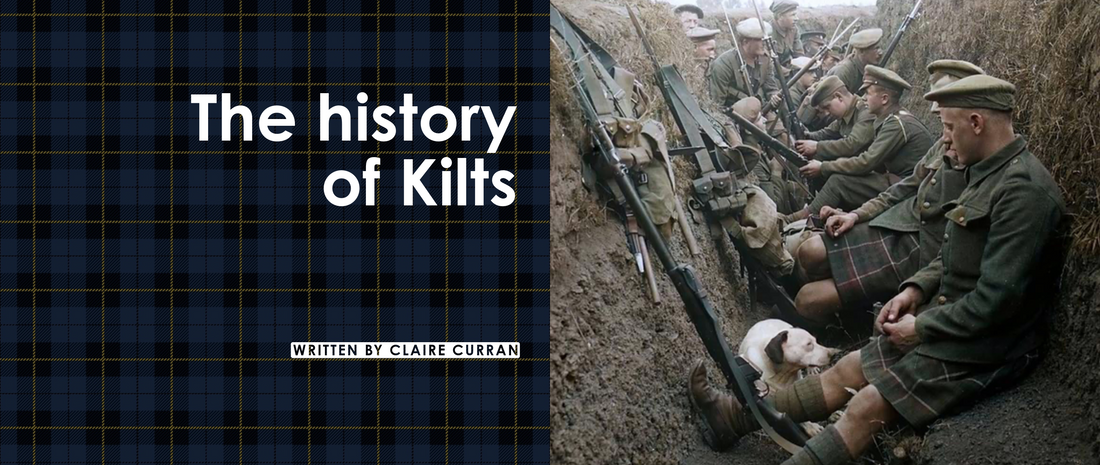
The History of Kilts
Share
The history of kilt making is a fascinating topic that reflects the evolution of Scottish culture and identity. But first, what IS a kilt?
The kilt is a traditional Scottish garment that originated in the Highlands in the 16th century. It was originally a large piece of tartan fabric that was draped around the waist and belted, with the excess length worn over the shoulder or the head. This was called the belted plaid or the "great kilt". It was a versatile and practical garment that could be used as a cloak, a blanket, or a shelter.

In the late 17th or early 18th century, the small kilt or the walking kilt was developed. This was essentially the lower half of the great kilt, tailored and pleated for convenience and mobility. It was more suitable for everyday activities and work, especially after the introduction of the spinning wheel and the mechanised loom, which made wool more abundant and affordable.
The kilt also became a symbol of clan identity and loyalty, as each clan had its own distinctive tartan pattern. Tartan is a woven fabric with horizontal and vertical stripes of different colors, creating a checkered design. The colours and patterns of tartan were influenced by the natural dyes and resources available in each clan's region.
The kilt was banned by the British government after the Jacobite rebellions of the 18th century, which aimed to restore the Stuart dynasty to the throne of Scotland and England. The kilt was seen as a sign of rebellion and a threat to the union. The ban lasted for only 36 years, until 1782, when it was repealed due to the influence of the Scottish Enlightenment and the Romantic movement, which revived the interest in Scottish culture and history.
The kilt became more popular in the 18th and 19th centuries, especially among the Scottish military, who adopted it as part of their uniform.

The kilt also gained recognition and admiration from the British royalty and aristocracy, who wore it as a sign of respect and affinity for Scotland. Queen Victoria and Prince Albert were particularly fond of the kilt and tartan, and they popularised it among the upper classes and the public.

During World War I, the kilt played a significant role as part of the uniform for Scottish regiments. Known as the "ladies from hell" by the German soldiers due to their kilts and fierce fighting spirit, the Scottish troops wore kilts in the trenches, despite the harsh conditions. The kilt served as a symbol of bravery and national pride, bolstering the morale of the soldiers and distinguishing them on the battlefield. However, the practical challenges of wearing kilts in muddy and wet conditions eventually led to them being replaced by trousers in certain contexts.
Today, the kilt is worn as a formal or ceremonial garment, as well as a fashion statement. It is often worn with a sporran (a pouch), a kilt pin, a sgian-dubh (a small knife), and a ghillie shirt (a lace-up shirt). The kilt is also a part of the national dress of Scotland. The kilt is a proud expression of Scottish heritage and identity, as well as a timeless and elegant piece of clothing.
